
Giant mirrored ball installed in Tokyo office to encourage city to think beyond 2020 Olympics
A seven-metre high silver sphere has been placed in the atrium of a Tokyo office by artist Akira Fujimoto and architect Yoko Nagayama, as the zero in the number 2021, to draw attention to the year after the Olympics takes place.
Three numerals the same height of the ball have been placed on the glass facade of the building, and together with the sphere they spell out the year 2021 when viewed from the street.
Fujimoto and Nagayama hope that the work will encourage visitors to look beyond the 2020 Olympics, and start a conversation about the legacy of the games.
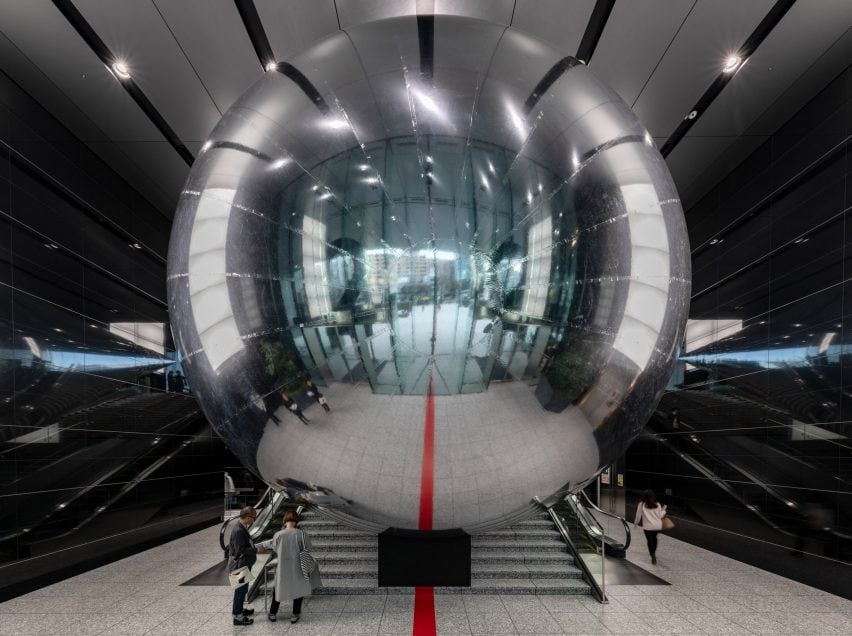
"The hot topic is the Olympics, but 2020 is not the goal, 2021 is the start. We should all be thinking together about what we will do after the Olympics, and the future," Nagayama told Dezeen.
"Everything seems to be focused on 2020, and we are particularly concerned that life goes on afterwards, especially design and art, hence the title of 2021," continued Fujimoto.
The installation at the 18-storey Avex Building in west Tokyo forms part of Designart Tokyo, a week-long event that replaced Tokyo Designers Week, and is now in its second year.
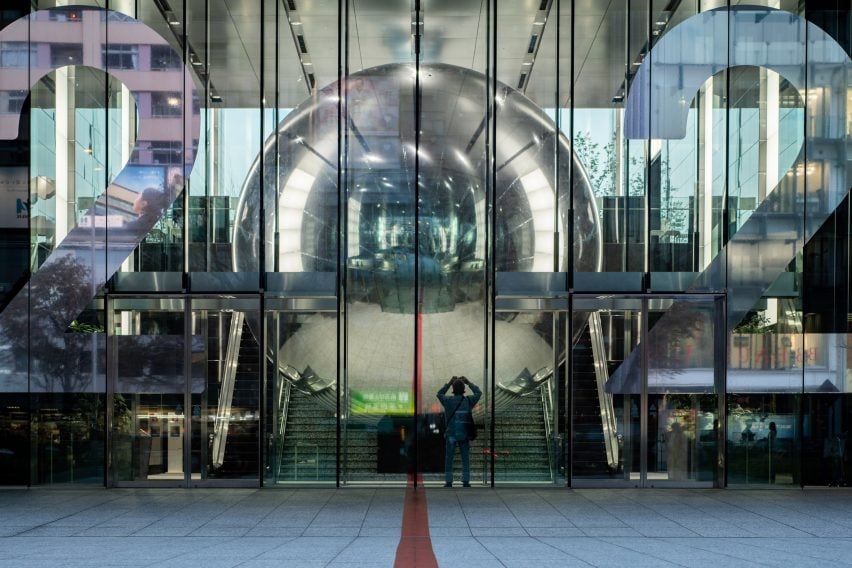
A red line running across the floor is reflected in the surface of the ball to creates an axis from the 1964 Olympic stadium to the northwest, through the site of the new Kengo Kuma-designed stadium, to Odaiba – a large artificial island in the southeast of the city that will be the site of the athletes' village.
"By placing it [the installation] in between the heritage zone and the new future it's making a statement at this point in time with a physical architectural installation," said Nagayama.

The Avex building installation is the latest in a series that Fujimoto began in 2016. Previously he had installed the number 2021 with a red sphere standing in for the "0" rather than the giant silver ball.
Locations for previous versions have included an open-access art factory near Haneda airport, a brownfield land overlooking the site of the new athletes' village, and the seafront at Fukushima, which suffered a nuclear disaster following the Tohoku earthquake in 2011.
This is the first 2021 project on which Fujimoto has worked with Nagayama to produce an urban installation of this scale. "In order to get the mission across, you have to be really bold and out there. If it was something simple, it would be overlooked," he said.
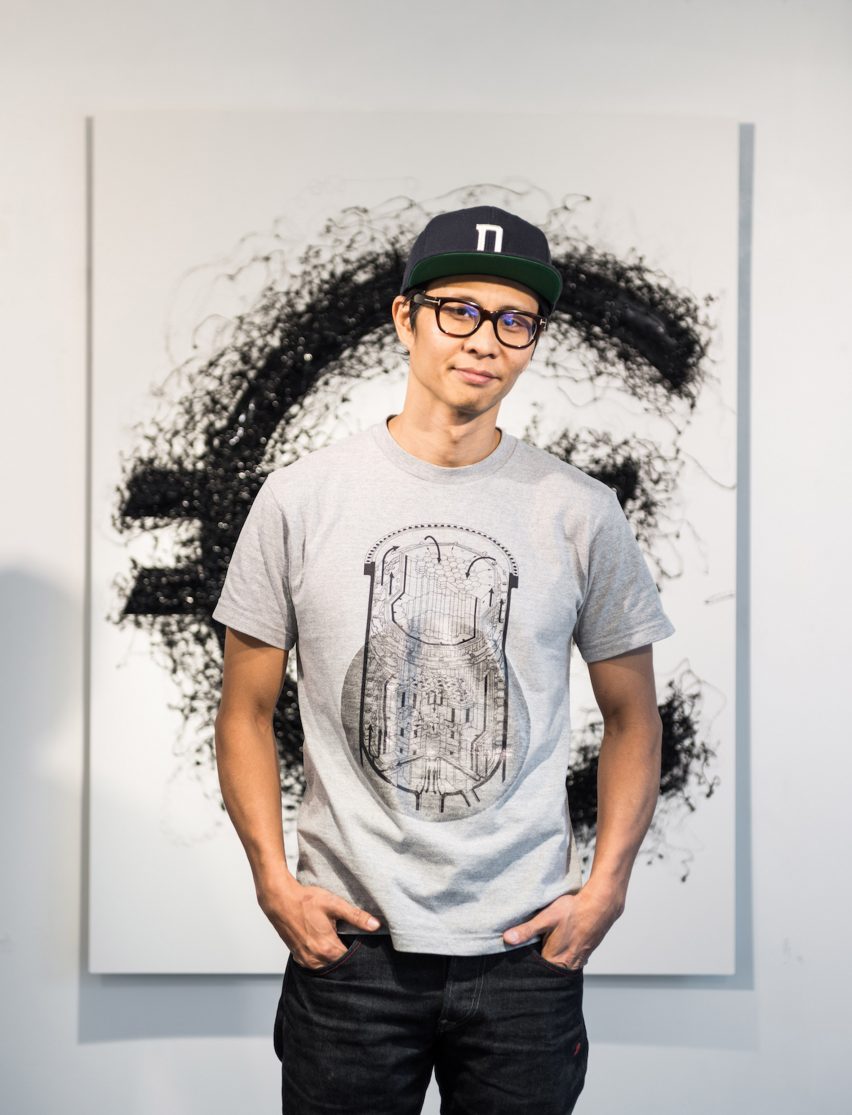
Fujimoto pointed out that after the decision was made that Tokyo would host the games, everyone "freaked out" with excitement, but that it is not always wholly beneficial for the host city.
"In Beijing and also Rio, every city except London has gone down since the Olympics. With our second time hosting the Olympics we shouldn't let that happen again," said Fujimoto.
"Last time there was too many advertisements, and big architect companies changing the city, but it's not reality for us. We have to think and talk, find answers," he continued.
Kuma's Olympic stadium is just a 15 minute walk from the Avex building, and the many shops and showrooms that hosted projects during Designart Tokyo surround the site.
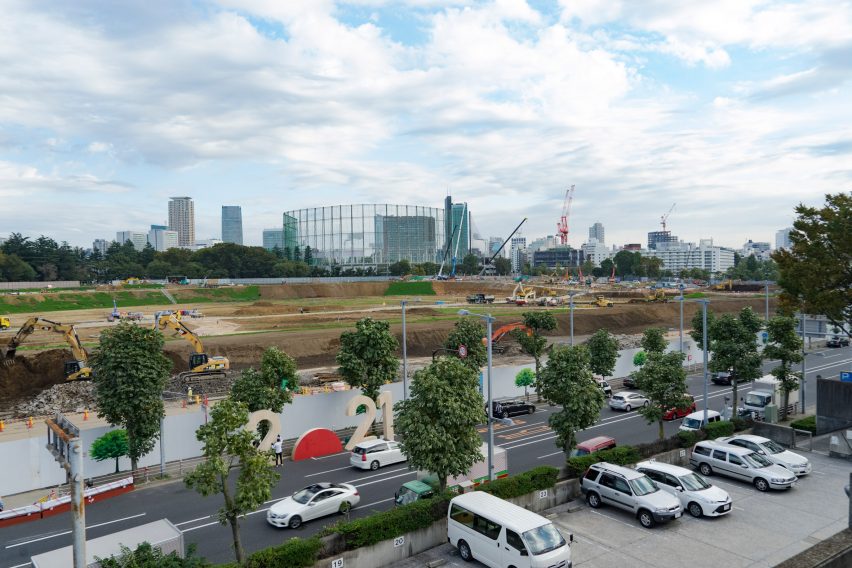
Construction is currently taking place on the stadium and around Shibuya station, one of west Tokyo's main transport hubs, but the changing face of the city is largely not addressed by the designers and artists showing work at the design week this year. 2021 is the only project to make reference to the impending games.
"In terms of construction, it's been revitalising. It's about time. It's a cycle, and let's say it's good timing," said Astrid Klein of Klein Dytham architects, and one of the founders of Designart.
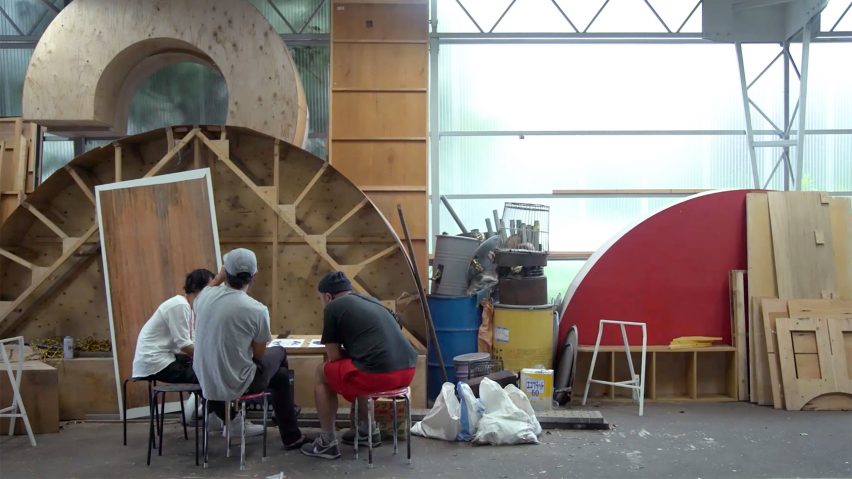
However, she pointed out that the Olympics haven't offered many opportunities for young Japanese architects, partly because of the networking and political connections that are allegedly rife in the city's planning: "Not left-right politics, but who-knows-who politics."
When asked whether she was looking forward to the Olympic Games, Nagayama, who is not involved in architecture projects involving the games said: "I'm preparing for the Dubai Expo which is right after the Olympics so I'm focused on that."
Last year's Designart festival was the inaugural event, following the cancellation of Tokyo Designers Week after the tragic death of a child who was trapped in an installation that caught fire in 2016.